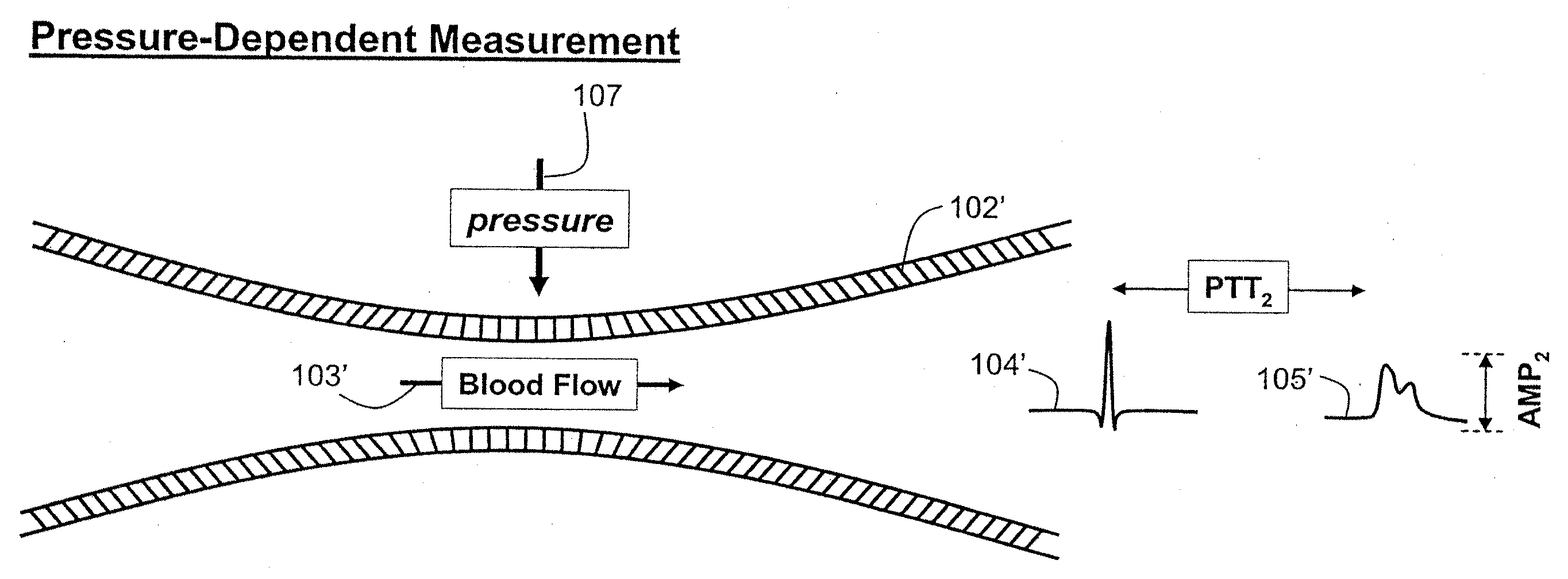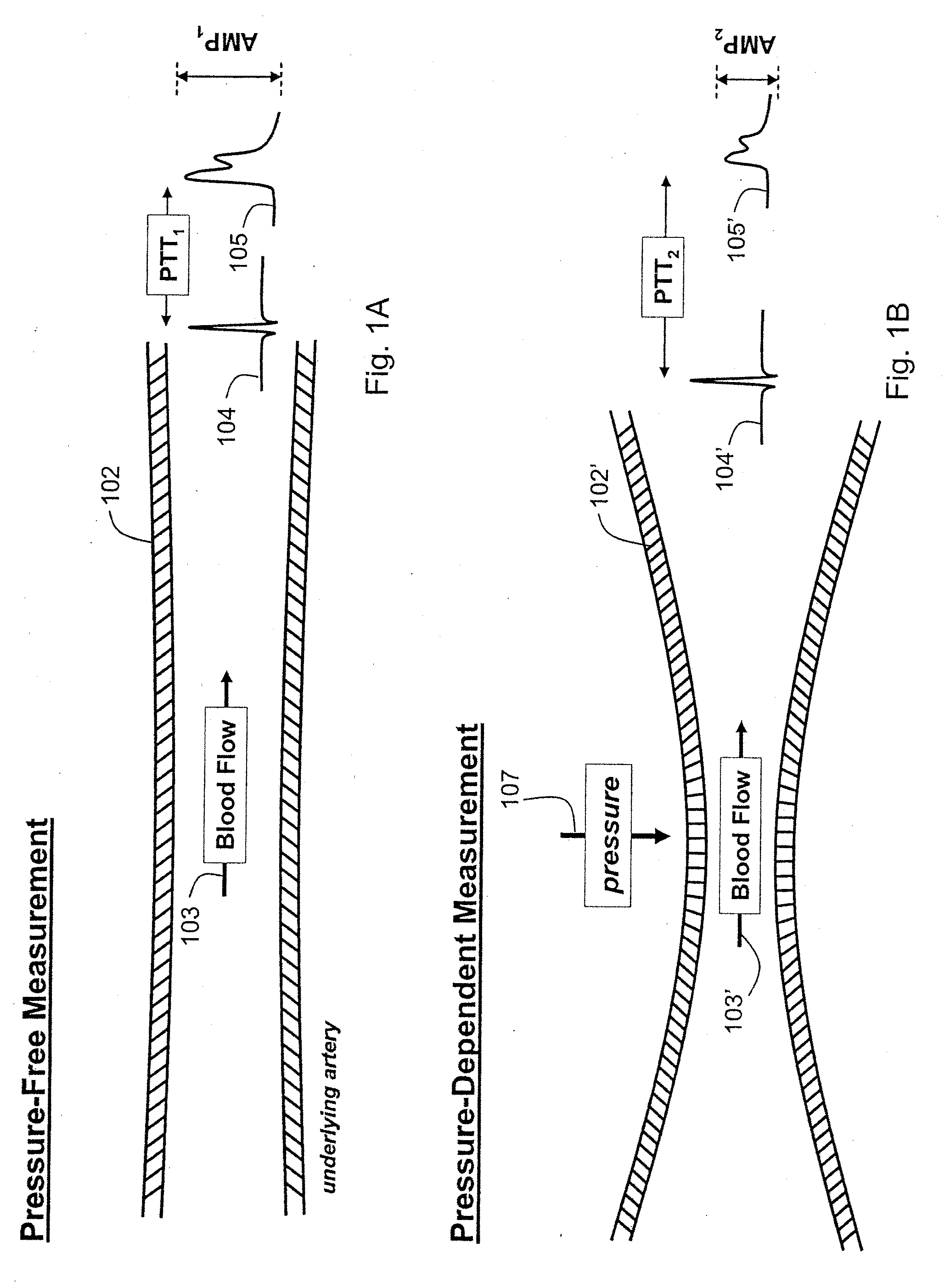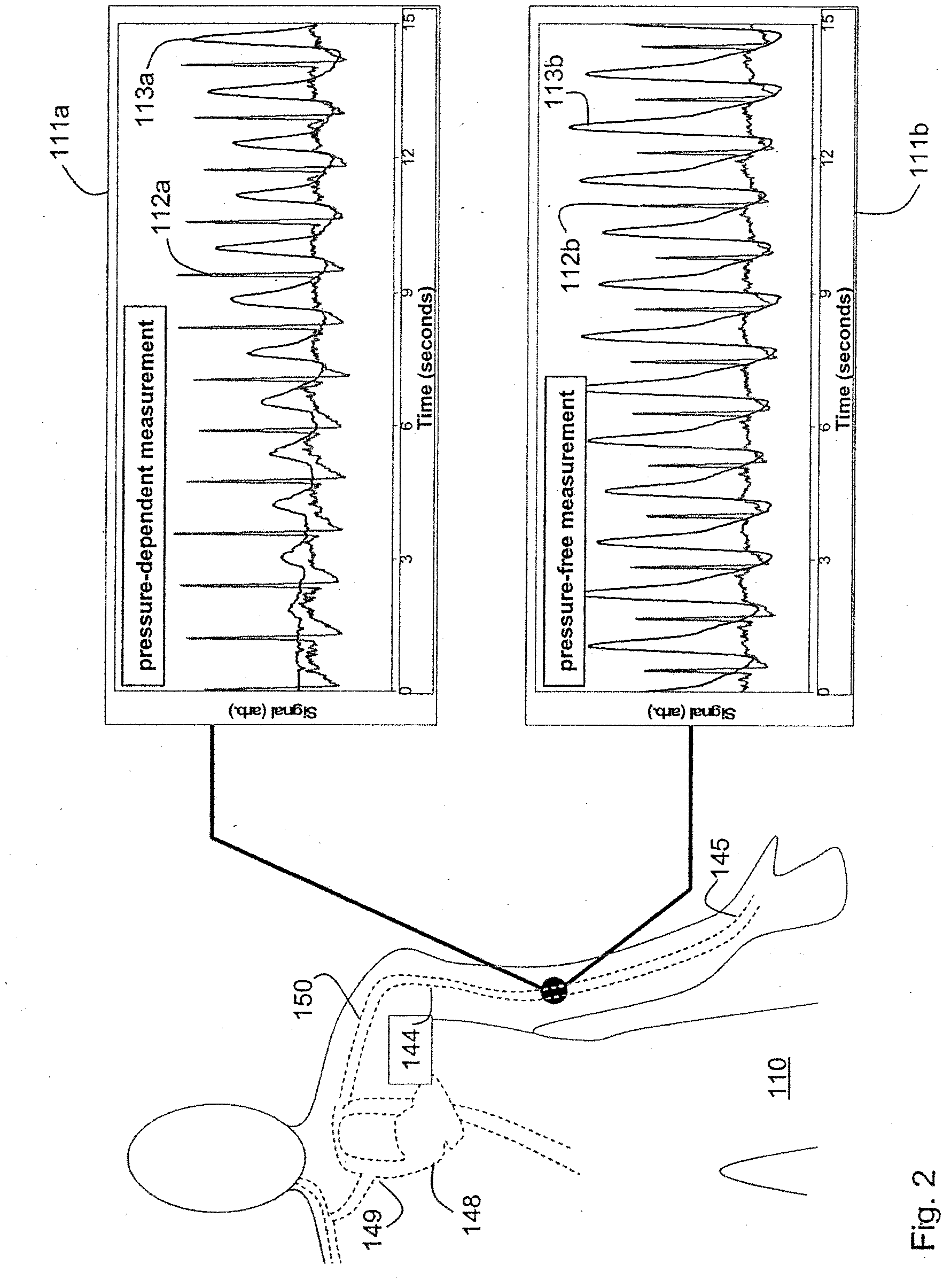Vital sign monitor for measuring blood pressure using optical, electrical and pressure waveforms
a technology of optical waveform and vital sign, which is applied in the field of medical devices for monitoring vital signs, can solve the problems of ptt not being measurable, less accurate, so as to reduce the amplitude of optical waveform, less accurate, and reduce the effect of blood flow
- Summary
- Abstract
- Description
- Claims
- Application Information
AI Technical Summary
Benefits of technology
Problems solved by technology
Method used
Image
Examples
Embodiment Construction
[0038]FIGS. 1A and 1B show schematic drawings of the composite technique's pressure-free (FIG. 1A) and pressure-dependent (FIG. 1B) measurements. Working in concert, these measurements accurately and continuously determine the patient's blood pressure for an extended time without requiring an external calibration device, e.g., a conventional blood pressure cuff. During a measurement, the patient wears a body sensor attached to a disposable armband and optical and electrical sensors. These sensors measure signals for both the pressure-dependent and pressure-free measurements. The co-pending patent applications, entitled: DEVICE AND METHOD FOR DETERMINING BLOOD PRESSURE USING ‘HYBRID’ PULSE TRANSIT TIME MEASUREMENT (U.S. Ser. No. 60 / 943,464; filed Jun. 12, 2007); and, VITAL SIGN MONITOR FOR CUFFLESSLY MEASURING BLOOD PRESSURE USING A PULSE TRANSIT TIME CORRECTED FOR VASCULAR INDEX (U.S. Ser. No. 60 / 943,523; filed Jun. 12, 2007), describe these components in more detail and are incorpo...
PUM
 Login to View More
Login to View More Abstract
Description
Claims
Application Information
 Login to View More
Login to View More - R&D
- Intellectual Property
- Life Sciences
- Materials
- Tech Scout
- Unparalleled Data Quality
- Higher Quality Content
- 60% Fewer Hallucinations
Browse by: Latest US Patents, China's latest patents, Technical Efficacy Thesaurus, Application Domain, Technology Topic, Popular Technical Reports.
© 2025 PatSnap. All rights reserved.Legal|Privacy policy|Modern Slavery Act Transparency Statement|Sitemap|About US| Contact US: help@patsnap.com



